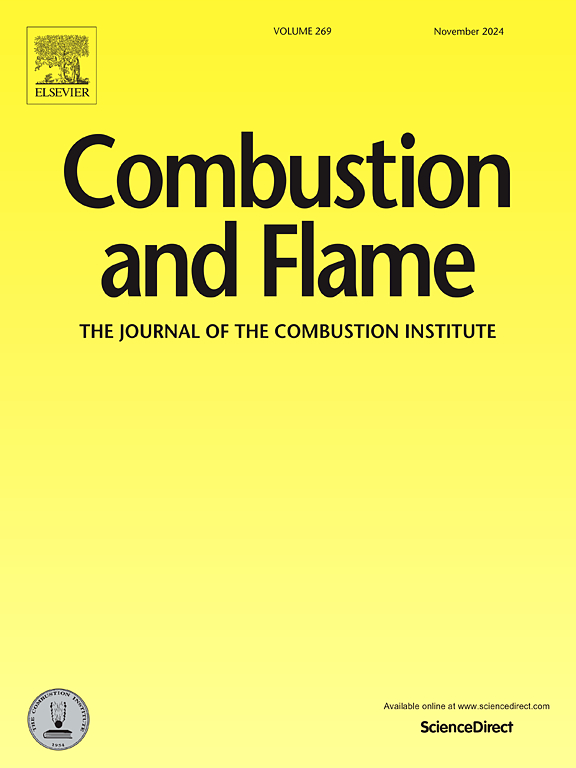High-pressure conversion of ammonia additivated with dimethyl ether in a flow reactor
IF 5.8
2区 工程技术
Q2 ENERGY & FUELS
引用次数: 0
Abstract
The oxidation of ammonia (NH3) mixed with dimethyl ether (DME) was investigated from experimental and modeling points of view using a quartz flow reactor with argon as bath gas from 350 K to 1225 K, for two different DME/NH3 ratios (0.05 and 0.3), three oxygen excess ratios (λ = 0.7, 1 and 3) and various pressures (1, 10, 20 and 40 bar).
The effect of pressure, oxygen stoichiometry, temperature, and DME/NH3 ratio has been analyzed on DME, NH3, NO, NO2, N2O, N2, O2, H2, HCN, CH4, CO, and CO2 concentrations.
The present study indicates that oxygen availability, DME/NH3 ratio, and pressure are important variables that shift NH3 and DME conversion to lower temperatures as their values increase. Under certain conditions, the pressure effect can avoid NO and HCN production, which would represent a benefit for pressure applications.
The main products of ammonia/dimethyl ether oxidation are N2, N2O, CO, and CO2, and under certain conditions, NO, H2, CH4, and HCN are also produced. NO2 is always detected below 5 ppm for all the conditions considered. The N2O formation is favored by increasing the O2 stoichiometry, pressure, and/or DME/NH3 ratio.
The experimental results are interpreted and discussed in terms of an updated detailed chemical kinetic mechanism, which captures, with a general good agreement, the main trends of NH3 and DME conversion under the considered conditions. Despite this, some calculated species present discrepancies with the experimental results. The main challenge is the consideration of the C-N interactions that can be present in the combustion of DME/NH3 mixtures.
求助全文
约1分钟内获得全文
求助全文
来源期刊

Combustion and Flame
工程技术-工程:化工
CiteScore
9.50
自引率
20.50%
发文量
631
审稿时长
3.8 months
期刊介绍:
The mission of the journal is to publish high quality work from experimental, theoretical, and computational investigations on the fundamentals of combustion phenomena and closely allied matters. While submissions in all pertinent areas are welcomed, past and recent focus of the journal has been on:
Development and validation of reaction kinetics, reduction of reaction mechanisms and modeling of combustion systems, including:
Conventional, alternative and surrogate fuels;
Pollutants;
Particulate and aerosol formation and abatement;
Heterogeneous processes.
Experimental, theoretical, and computational studies of laminar and turbulent combustion phenomena, including:
Premixed and non-premixed flames;
Ignition and extinction phenomena;
Flame propagation;
Flame structure;
Instabilities and swirl;
Flame spread;
Multi-phase reactants.
Advances in diagnostic and computational methods in combustion, including:
Measurement and simulation of scalar and vector properties;
Novel techniques;
State-of-the art applications.
Fundamental investigations of combustion technologies and systems, including:
Internal combustion engines;
Gas turbines;
Small- and large-scale stationary combustion and power generation;
Catalytic combustion;
Combustion synthesis;
Combustion under extreme conditions;
New concepts.
 求助内容:
求助内容: 应助结果提醒方式:
应助结果提醒方式:


